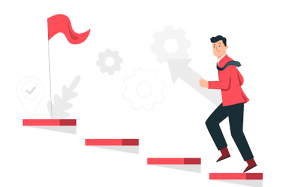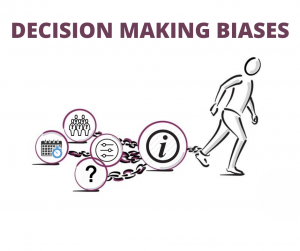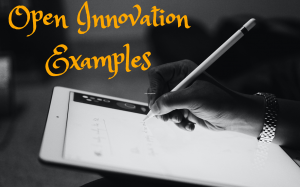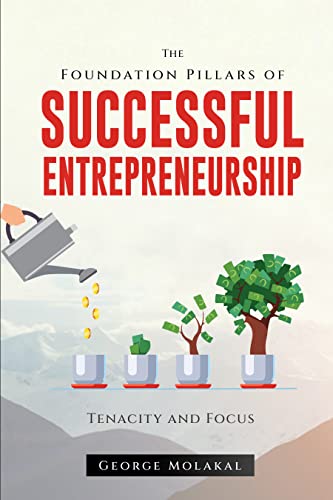What is the Innovation Process?
Innovation refers to the introduction of a new quality of a good or a new good, market, method of production, source of supply, and organization in an industry. The most promising thing about the innovation process is being able to actualize an idea into a successful concept.
In this blog, I will explain, Importance, steps involved, its types, examples with risks and solutions involved in the innovation process.
“Innovation takes birth in sync with the evolution of customer’s expectations and demands or vice versa. Either way, organizations around the world have to continually innovate themselves and keep up with the people’s wants. The failure to do so or being indifferent to your customer’s needs will make your competitors win. And then, customers become indifferent to you with a high-risk gamble to play at.”
– Ketan Kapoor, Co-founder of Mercer-Mettl
Importance of Innovation
Solving problems –
If your business provides services, you might realize that your customers do not have an avenue to share their opinions, complaints, and compliments.
So, to solve the problem, you could decide to operate a virtual office where customers’ needs can be attended to within a short time. The customers will be happy and as a result, your sales will go higher.
Adapting to change –
Change is inevitable and innovation is the method to not only keep your business afloat but also ensure that it remains relevant and profitable. So, when you develop an innovation culture, you remain relevant at all times.
Maximizing on globalization –
Markets all over the world becoming more interlinked and greater opportunities are emerging in these new markets.
For instance, if your company hopes to tap into this market share, innovation is a must to enable you to capitalize on the opportunities opening up.
Facing up the competition –
To retain or establish your company’s cutting edge, you can compete strategically by having a dynamic business that can make strategic and innovative moves and thus cut above the rest.
Evolving workplace dynamics –
The demographics in the workplace are constantly changing. Innovation is therefore critical to ensure the smooth running of the company.
Customers’ changing tastes and preferences: The current customer has a great variety of products and services available to him. Hence, the company must keep itself abreast of these evolving tastes and also forge new ways of satisfying the customer.

Steps of Innovation Process –
Step 1: Idea Generation and Mobilization –
New ideas are created during idea generation. Successful idea generation should involve the pressure to compete and the freedom to explore.
Mobilization occurs when the idea is moved to a different logical or physical location.
For instance, how Apple waited three years after MP3 players were introduced to create the iPod, which was attractive, intuitive, and offered capacity for up to 1,000 songs.
Step 2: Advocacy and Screening –
Advocacy and screening help to evaluate the feasibility of a business idea with its potential problems and benefits.
Hence, a decision can be made about an idea’s future. Companies looking to develop a culture can establish a few best practices.
For instance, Employees should have plenty of avenues to receive advocacy and feedback. Also, organizations must understand the difficulties involved in evaluating truly innovative ideas. Also, organizations need to build transparent evaluation and screening protocols.
Step 3: Experimentation –
The experimentation stage tests the sustainability of ideas for an organization at a specific time. Experimentation generates new ideas with the information that is gathered on the results and feasibility of the original idea.
For instance, when Amazon tested its grocery delivery service in certain Seattle suburbs. After this, Amazon Fresh expanded to Los Angeles, San Diego, and New York City.
Step 4: Commercialization –
Commercialization develops market value for an idea by focusing on its impact. An important part is establishing the specifications of any given idea.
Commercialization is the stage that involves the change of focus developments to persuasion. After the idea is clarified and a business plan is developed, it will be ready for diffusion and implementation.
Step 5: Diffusion and Implementation –
Diffusion is the company-wide acceptance of an innovative idea, and implementation sets up everything needed to develop the innovation.
Diffusion and implementation allow the organization to determine the next set of needs for customers. Receiving feedback, indicators for success metrics, and other benchmarks enable the organization to stimulate the innovation process.
Types and Examples of Innovation
Product Innovation –
Product innovation is either the development of a new product, such as the Fitbit or Amazon’s Kindle, or an improved version of the existing product, such as an increase in the digital camera resolution of the iPhone.
It could also be a new feature to an existing product, such as power windows to a car.
Examples of product innovations:
- The first electric vehicles introduced in the car’s market were also innovative, and new batteries with longer ranges that keep coming out are also an example of innovation.
- Lego has been changing the materials of its bricks to biodegradable oil-based plastics.
Process Innovation –
The process involves a combination of skills, facilities, and technologies used to produce, support, and deliver a product or service.
Examples of Process innovations:
Henry Ford’s invention of the world’s first vehicle assembly line. This process changed the vehicle assembly and shortened the time necessary to produce a single vehicle from 12 hours to 90 minutes.
The Differential company built a mobile sales dashboard for the leading Grupo Bimbo. Having a mobile sales dashboard gives the team quick access to the sales information and other KPI’s for each country.
Business Model Innovation –
In a Business model innovation capabilities, or processes optimized to make a company successful and profitable will become the targets for transformation.
Examples of Business Model innovations:
Amazon found a new channel through technology by eliminating the traditional retail distribution channel and developing direct relationships.
IBM has managed changes in customer offers from mainframes to personal computers to technology services.
Organizational Innovation-
Organizational innovation refers to the development of a new organizational strategy. This involves changes in the company’s business practices, organization of work, and relationship with external stakeholders.
Examples of organizational innovations:
- The companies adopted a four-day week working schedule.
- The companies that started to use the power of digital and allowing employees to skip the office and work from home.
Marketing Innovation –
Marketing innovation means developing a new marketing strategy that produces changes. For instance, designing, packing, and other decisions regarding the price or promotion of a product.
Example of marketing innovation:
Touch Packaging Design has partnered with Nestlé Ice Cream to create a reusable, durable container for its Häagen-Dazs brand that can be used in the new Loop circular shopping platform.
Risks of the Innovation Process and their solutions
Technological failure of the innovation –
The biggest risk any company takes in the innovation process is whether or not the new product or idea will work once it is launched. To manage this risk, the company may carry out trials on a small scale to test its effectiveness.
So, if this is done, the necessary adjustments may be made to avert any huge losses once the product is mass-produced.
Financial strain –
The innovation process is faced with the challenge of draining out the company resources. This is because of the returns that are usually long-term as opposed to immediate.
So, if this is done, averting the necessary adjustments may be made to avert any huge losses once the product is mass-produced.
Market failure –
Failure in the introduction of new products or technology to the market means that demand would be low and therefore the innovation is not viable commercially.
Hence, you should undertake extensive and in-depth market research before committing limited resources to its development and production.
Redundancy –
With trends in the market, a profitable innovation today may be redundant shortly. Therefore, there must be constant research on how to improve the existing systems, and the factors influencing them to stay a step ahead.
Lack of capacity for implementation –
Lacking the structural and financial capacity to roll out the innovation is always risky. You may choose to look for partners who will assist in your area of lack and thus overcome the challenge.
Organizational risks –
These risks involve the structuring and running of the business. So, following proper planning and allocation of resources helps to ensure this does not happen.
Unprecedented risks –
They may involve changes in policies or political instability whose ripple effect spills over hindering the effectiveness of the innovation. Therefore, the business needs to keep a contingency plan to buffer it against such unseen events.
Conclusion
“I believe you have to be willing to be misunderstood if you’re going to innovate.“
–Jeff Bezos (Founder of Amazon)
Although finding the right process for innovation may seem difficult, to begin with, the idea is not to follow just one of them. Instead, take some time to test the most promising one and combine different characteristics that might work best for your purposes.
If you are looking for funding, evaluate your business on 40 parameters and get access to 5K global investors. Alcor private equity and Venture capital firms also empower founders and businesses to grow their companies at all stages.









